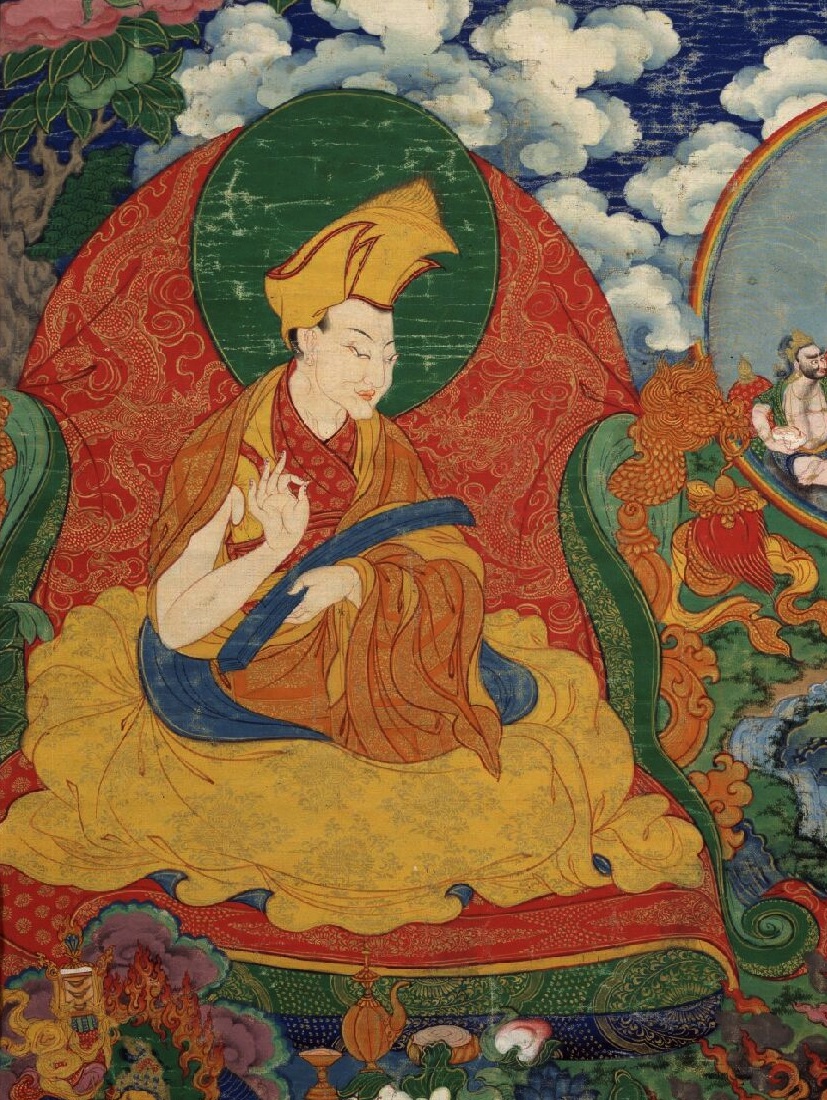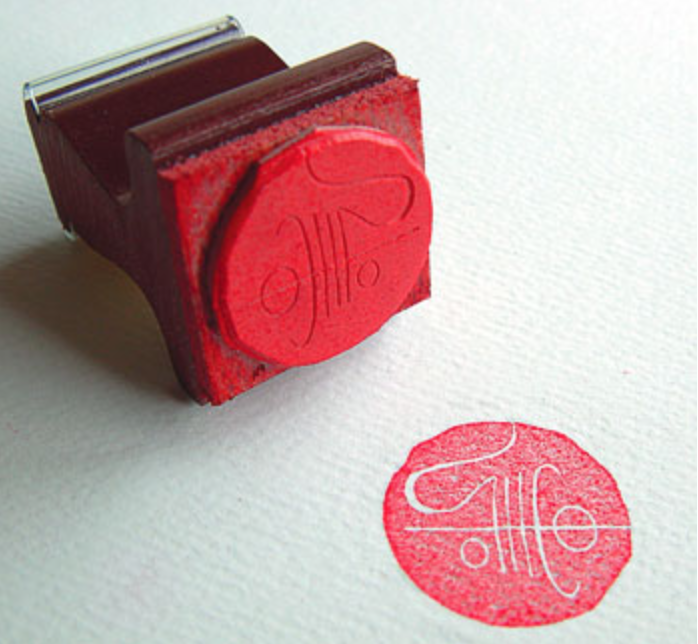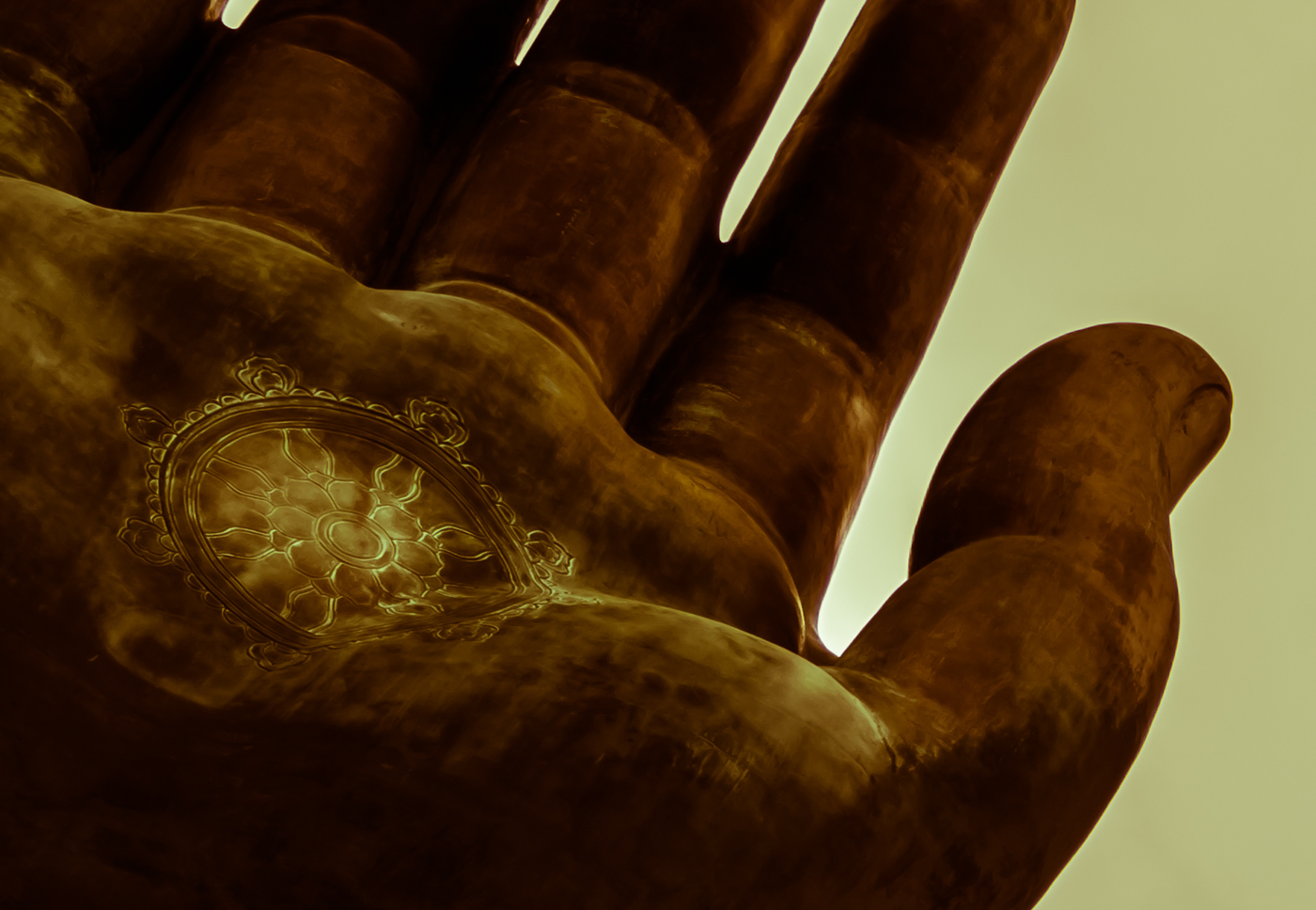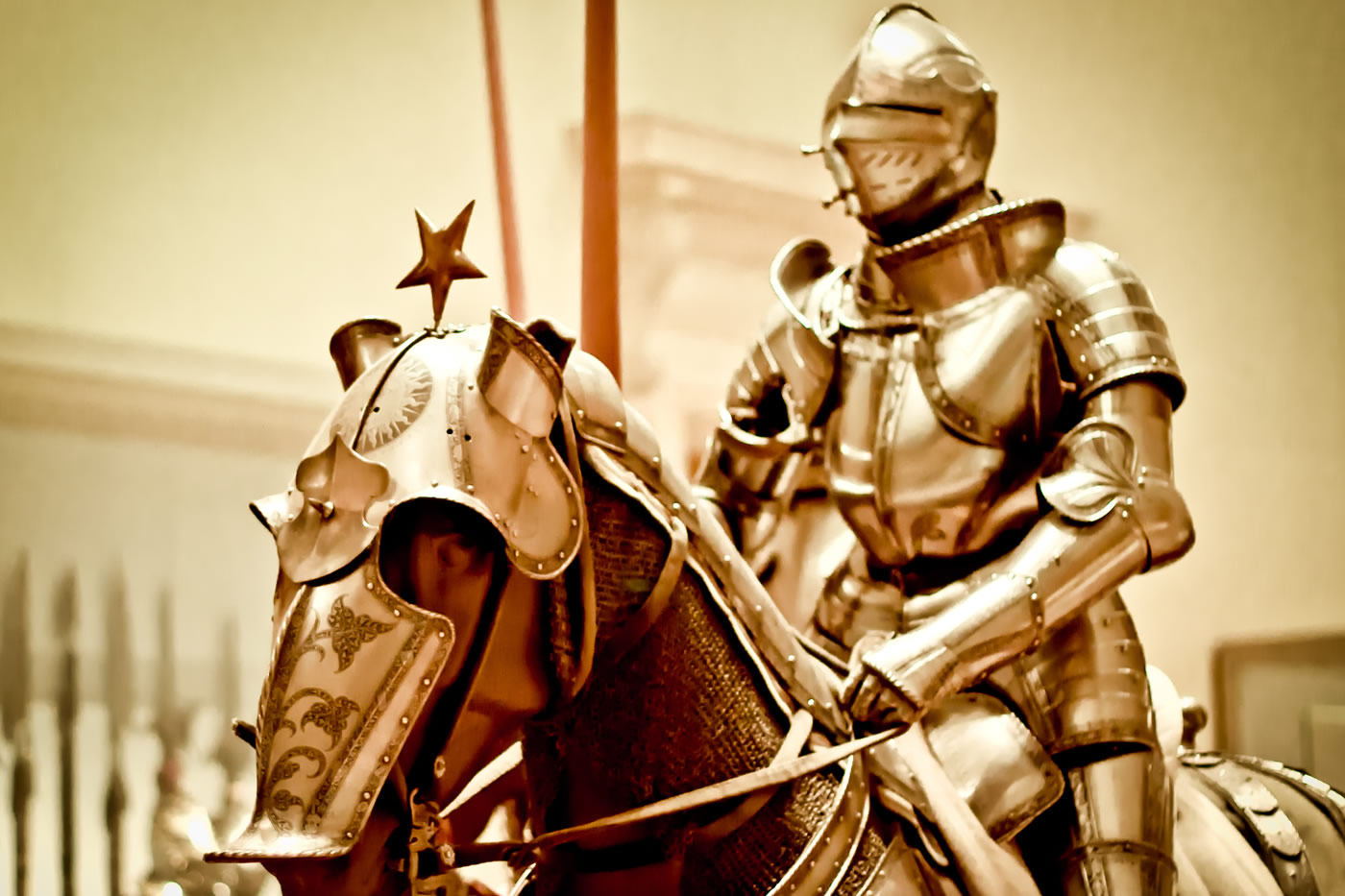http://www.youtube.com/watch?v=p1TlpeiVjXE&t=0m1s
Alright, answer key class two ready? Here we go …
1. Does merit necessarily lead to nirvana and Buddhahood? Why or why not?
Does all good karma lead to nirvana and Buddhahood?
 No. Why? There’s dirty good karma, there’s the karma you do with a bad motivation. There’s a huge question in Chandrakirti, ready? So, according to DCI level 4/5 the way to get a partner, wife or husband, is to help lonely people. Plant seeds by going to a nursing home, find an old lady, an old man, and help them. And I have had one for 20 years. Why Geshela, you already have a partner? I want to keep them, you can’t stop, it’s a pyramid scheme … MLM okay? You can’t stop, to keep the partner going you’ve got to keep visiting the old lady. So, now there comes a big question in Chandrakirti: if you go to visit the old lady and you don’t love her, you just use her as your karmic object, you try to find the worst one. I had a guy in Detroit, he raised his hand, he said “Geshela, I found my old lady”, I said “yeah that’s nice”, he said “no no I found THE old lady!” I said, “what do you mean?” He says, “she’s poor, she’s sick, and she’s broke.” “Yeah, poor, broke, and lonely so I can get a partner, money, and good health from one lady.”
No. Why? There’s dirty good karma, there’s the karma you do with a bad motivation. There’s a huge question in Chandrakirti, ready? So, according to DCI level 4/5 the way to get a partner, wife or husband, is to help lonely people. Plant seeds by going to a nursing home, find an old lady, an old man, and help them. And I have had one for 20 years. Why Geshela, you already have a partner? I want to keep them, you can’t stop, it’s a pyramid scheme … MLM okay? You can’t stop, to keep the partner going you’ve got to keep visiting the old lady. So, now there comes a big question in Chandrakirti: if you go to visit the old lady and you don’t love her, you just use her as your karmic object, you try to find the worst one. I had a guy in Detroit, he raised his hand, he said “Geshela, I found my old lady”, I said “yeah that’s nice”, he said “no no I found THE old lady!” I said, “what do you mean?” He says, “she’s poor, she’s sick, and she’s broke.” “Yeah, poor, broke, and lonely so I can get a partner, money, and good health from one lady.”
He was so happy, and it’s true, I’m sorry, so anyway the question comes in Chandrakirti: if you visit the old lady with a cold heart, you just want a boyfriend, you don’t care if she dies tomorrow, will you get the boyfriend or not? You will, but he’ll be a selfish son of a gun—you’re collecting 2 karmas, white and black. You you will get a boyfriend, but he will be unpleasant. It is good karma, but it may not lead you to nirvana or Buddhahood if you don’t have the motivation. There’s such a thing as dirty good karma—good karma that has … comes with the … you get the boyfriend but he’s selfish okay, or he doesn’t have a job and he expects you to make all the money, something like that, you know this kind.

http://www.youtube.com/watch?v=p1TlpeiVjXE&t=2m58s
2. What is the Sanskrit word for the “great seal”?
Alright, next question . In the book the Three Principal Paths you should understand something important, there’s a tradition in the Tsongkapa lineage that you cannot give the secret teachings [Vajrayana] to a person without a review of the Lamrim first, even if they pass the eighteen courses it doesn’t matter, you must review the Lamrim with them before they get the secret teachings—you’re not allowed to give the secret teachings without doing a Lamrim again, which is a summary of the Geshe course. So, in our Diamond Way course we made it the first 3 courses. The first 3 courses are actually not Diamond Way, they’re a review of the Lamrim, and a very famous Lamrim called the Path to Bliss by the First Panchen Lama—extraordinary poet, extraordinary philosopher, extraordinary, unbelievable. That’s the last time Geshe Lotar came here, and during those teachings he shared a lot of experiences that he had with my teacher okay, I think that’s the last time he was here, that was 16 years ago.
 Now, so one of the big secret teachings is called mahamudra, in Tibetan: chakya chenpo (pyag rgya chen po). “Mudra” means the seal that a king puts on his letter when he says, “forty thousand cavalry soldiers should march to Afghanistan and take it over.” It’s the old confirmation email, and if you were caught with a seal resembling the king’s seal, you would be killed immediately. It’s his way of signing a paper, and a king would never be without his seal. I like to say the American President has a black box, we call it “the black box”, and a high military officer is always within 20 meters of the American President. That box has the key to send nuclear missiles around the world, because right now you have only 15 minutes to decide, you have 15 minutes to send them or not to send them, so they stand outside his bedroom all night. Once you become President, I saw when Obama came out of the White House he was like “Ahh” you know, “Trump, you got the box, I don’t have the box anymore”, he was so happy, why am I talking about that?
Now, so one of the big secret teachings is called mahamudra, in Tibetan: chakya chenpo (pyag rgya chen po). “Mudra” means the seal that a king puts on his letter when he says, “forty thousand cavalry soldiers should march to Afghanistan and take it over.” It’s the old confirmation email, and if you were caught with a seal resembling the king’s seal, you would be killed immediately. It’s his way of signing a paper, and a king would never be without his seal. I like to say the American President has a black box, we call it “the black box”, and a high military officer is always within 20 meters of the American President. That box has the key to send nuclear missiles around the world, because right now you have only 15 minutes to decide, you have 15 minutes to send them or not to send them, so they stand outside his bedroom all night. Once you become President, I saw when Obama came out of the White House he was like “Ahh” you know, “Trump, you got the box, I don’t have the box anymore”, he was so happy, why am I talking about that?
It’s like the mudra, the king, the emperor, must have their … nobody can touch it, they must have it with them. So, it became a word to describe the direct perception emptiness, especially the emptiness of your mind—it became a word that means the direct perception emptiness, and then in Tantra, in the secret teachings, it became a word for your spiritual partner. Mudra, in the secret teachings, means your spiritual partner, and that’s the fastest way to practice the Diamond Way. If you can find a highly qualified spiritual partner, practice together with them, that’s the fastest way to do the fastest way. It’s the highest way, and there are stories in the monastery about Pabongkha’s spiritual partner, very interesting, he had a special cave, and there’s all these stories about this angel who used to walk out of the cave, people would just run into her. Buddha had a spiritual partner called Tilottama, and according to the Diamond Way, he only became enlightened because he had a spiritual partner. They became enlightened on the same morning together, so imagine you’re sitting together with your partner, the sun comes up at Diamond Mountain and with the first rays of light, you both get enlightened—that’s the real story, and you can read it in the texts.
 John recovered those texts. It’s highly secret books of Gyume [Tantric College], I asked for those books, because my teacher became the abbot, so I said “you’re Abbot right?” He said, “yeah”. I said “give me those books, I want to input them”, he said “no!” We have an input Center about a hundred yards from the monastery in Hunsur, so I gave up, I couldn’t get those books, twelve highly secret books, then one day from Hunsur, which is all ladies [in the ACIP input center], the data came, all twelve books. I called them, “how’d you get these books?” They’re like, “we know some of the monks.” I’m like, “man, good job!” They didn’t do anything bad okay, they just asked for them. So, the whole story of Tilottama is in those books, and I translated it and it’s in course 17 of the Diamond Way. Tsongkapa had a partner, Tangsha Marmo, the lady with the red hat, and that’s a beautiful story which you can read, he was assigned a partner by Manjushri. He didn’t really want one, and that’s another story, but Manjushri said, “look you’re going too slow, you need a partner”, so that’s a beautiful story. You can kind of read that in that big red book if you look carefully, we even made a painting of her.
John recovered those texts. It’s highly secret books of Gyume [Tantric College], I asked for those books, because my teacher became the abbot, so I said “you’re Abbot right?” He said, “yeah”. I said “give me those books, I want to input them”, he said “no!” We have an input Center about a hundred yards from the monastery in Hunsur, so I gave up, I couldn’t get those books, twelve highly secret books, then one day from Hunsur, which is all ladies [in the ACIP input center], the data came, all twelve books. I called them, “how’d you get these books?” They’re like, “we know some of the monks.” I’m like, “man, good job!” They didn’t do anything bad okay, they just asked for them. So, the whole story of Tilottama is in those books, and I translated it and it’s in course 17 of the Diamond Way. Tsongkapa had a partner, Tangsha Marmo, the lady with the red hat, and that’s a beautiful story which you can read, he was assigned a partner by Manjushri. He didn’t really want one, and that’s another story, but Manjushri said, “look you’re going too slow, you need a partner”, so that’s a beautiful story. You can kind of read that in that big red book if you look carefully, we even made a painting of her.
3. Is there any relationship between the three principal paths and the great seal? Between these three and tantric practice?
Anyway, why are we talking about Tantra in the middle of course 1 class 1 of the non-Tantra? Why are we talking about Mahamudra? Ya, beautiful! You cannot touch the secret teachings without these 3 attitudes, you will fail, something bad will happen, something really bad will happen, we had people die here. Something bad will happen if you try to practice the secret teachings without those three attitudes—if your motivation is not: (1) I’m tired, (2) I’ve got to be a Buddha, and (3) I’ve got to see emptiness directly. If you don’t have those 3 in your heart, you will fail in the second eighteen courses, you will fail spectacularly, like amazingly, it’ll be a real amazing okay? So actually these 3 are protecting you for when you get to the higher teachings—if you don’t have them you cannot practice those teachings. So, Phabongkha Rinpoche, and Tsongkapa, they’re trying to sell you first grade Lamrim, and they’re telling you, “if you don’t learn addition you can’t learn calculus”, you know, see? You won’t make it. Got it? You need this stuff.
If you want to become a Buddha, you’ve got to have the three principal paths. If you want to practice Mahamudra, Tantra, with a partner—by the way, why is a partner called “mudra”? You can never leave them, you see what I mean? It’s like the emperor’s stamp. You can’t … once you make that relationship, you should stay with them until you’re enlightened. It doesn’t mean you can’t switch partners if it happens, but it does mean when you make that commitment to use that path, you must have a partner—you can’t give up on that idea. If you lose your partner you should find a new one, a good one, but you can’t give up. You can have fights with your partner, you can separate with your partner, but you must find your partner—you can’t give up, it’s mudra, got it? If you don’t have the three principal paths you will lose your partner and bad stuff will happen, got it?
http://www.youtube.com/watch?v=p1TlpeiVjXE&t=12m41s
Okay, so that’s homework question number 3.
The word principal is misspelled in the homework … well it happens to the best of us … okay, question 4:
4. What are the two principal causes that bring about the state of Buddhahood?
 We call it method and wisdom. They’re called the 2 wings of the bird. If you don’t have two wings you can’t fly, here’s method, here’s wisdom. Method is Bodhisattva’s training, training as a bodhisattva basically. Wisdom is the understanding of emptiness. If you don’t have these two you can’t fly, you’ll never make it. So, “method” is a code word for the activities and thinking of a bodhisattva, “wisdom” is wisdom okay … hundred dollars! When’s the last time you thought about these things? If you get it wrong you owe me $100. Nice, dang! He’s some expensive dude … $100.
We call it method and wisdom. They’re called the 2 wings of the bird. If you don’t have two wings you can’t fly, here’s method, here’s wisdom. Method is Bodhisattva’s training, training as a bodhisattva basically. Wisdom is the understanding of emptiness. If you don’t have these two you can’t fly, you’ll never make it. So, “method” is a code word for the activities and thinking of a bodhisattva, “wisdom” is wisdom okay … hundred dollars! When’s the last time you thought about these things? If you get it wrong you owe me $100. Nice, dang! He’s some expensive dude … $100.
Yeah … gewa diyi kyewo kun, sunam yeshe tsok-dzok shing … oh got it? Collection of merit and wisdom, method and wisdom, got it? Okay, we’ll talk about it … where does that come from? For zero dollars … the 60 Verses of …[Nagarjuna’s 60 Verses on Reasoning] it’s the last of the 60 verses that Nick is translating, that prayer you do every night.
http://www.youtube.com/watch?v=p1TlpeiVjXE&t=14m42s
5. What are the main elements of these two?
What’s inside of method, and what’s inside of wisdom? I’ll give you a clue, split the three principal paths into those two, which is which? Where does renunciation belong? With method. Where does bodhichitta belong? Method. Where does wisdom belong? With wisdom, yay! Okay you passed question 5.
6. What are the two bodies of a Buddha?
Now, there’s a special teaching called the “bodies of a Buddha”, “kaya” right? Dharmakaya, Nirmanakaya, Sambhogakaya, kayakaya, Svabhavakaya. There’s lots of kayas, bodies of the buddha, and it’s a very very important teaching in Buddhism, the different bodies of a Buddha. And I’m sorry, you know on the way here I was thinking how do I explain “bodies”, they’re not separate bodies. It doesn’t mean that, it just means part—Buddha has two parts, or Buddha has three parts, or Buddha has four parts.
So, there’s three different ways to teach the kayas, you can teach two, you can teach three, you can teach four. I’m going to do two with you to start with, okay ready? And it’s on your homework! Number one: “Zuku”, Rupakaya, what does it mean? Yeah, the physical part of a Buddha, the physical part of a Buddha—the part you can see, touch, that’s called Rupakaya. You want to go deeper? Two parts to the … there’s two bodies inside the physical body. Give me any of them? Give me one. Yeah, those two … one is called “emanation body”, the one you send to planets, the copy of you that you sent to other planets. You can be a dog making an old lady happy in Los Angeles, and you can be a didi driver [like Uber] in Beijing at the same time, if it makes people happy. That’s called emanation body, you have the power to split your body and serve multiple people at the same time, got it? Easy right?
 What’s Sambhogakaya? That’s called “enjoyment body”, it just means your headquarter body, headquarter physical body in Buddha paradise okay? It has how many signs? 112, I taught it here for like a week, but that was a while ago and we got leaky teacups. 32 major signs, 80 secondary signs, on the Buddha’s body, that body, coke classic, classic body, that’s the Sambhogakaya, that’s the one that stays in heaven.
What’s Sambhogakaya? That’s called “enjoyment body”, it just means your headquarter body, headquarter physical body in Buddha paradise okay? It has how many signs? 112, I taught it here for like a week, but that was a while ago and we got leaky teacups. 32 major signs, 80 secondary signs, on the Buddha’s body, that body, coke classic, classic body, that’s the Sambhogakaya, that’s the one that stays in heaven.
Then they come here and they look like Seiji, they look like Steven, they look like Connie, okay that’s Nirmanakaya, got it? Now the other body, when you teach it as two bodies is called? Dharmakaya. It also … you want to go deeper? It also has two parts, which is why you can make four bodies out of two bodies. It also has two parts, number one, the easy one, is the mental state of a Buddha, Jñanadharmakaya, the omniscience of a Buddha—the ability to see all things at all times. Past, present, and future—that ability is a separate body, body number three so far tonight right?
What was number one? Nirmanakaya, send yourself as a dog to LA, send yourself as a didi driver to Beijing, and what’s the second one? Yeah home body, sometimes I like to call it “paradise body” okay, with the 112 marks. Body number three? It’s mental, the mental state of a Buddha, can see all things at all times.
Now, body number four is the most interesting one, what’s it called? The emptiness body, Svabhavakaya,. “Swa bhawa”, Sanskrit doesn’t really have a “v” swa bhawa … swa bhawa … Svabhavakaya, emptiness body … for $100 and not word ok, you’re not … if you want to answer it’s one dollar … tell me what’s super cool about the Svabhavakaya, the emptiness body? Yeah, you have it now, you already have it. It’s your “Buddha nature”, what’s the Sanskrit word? Word, for $10! Buddha nature in Sanskrit … huh? Whoa! Tathagata-garbha, “garba” means the womb of a woman, Tathagata means Buddha, and you already have this womb, every person has it, you have body number four, you already have body number four. Okay, you want to impress your friends at a cocktail party? I saw a nice cartoon in The New Yorker, there’s this nerdy guy talking to this lady in a miniskirt and she’s … they’re at the cocktail party and then the guys are trying to impress the girl right? So, in the cartoon she says, “no I don’t want to know your secret mantra” … he’s just trying to … okay anyway , why did I talk about that? How’s that connect to cocktail parties? Oh yeah, you want to impress your friends … okay, if you meet a girl at a cocktail party you can say, “do you know that part of you is already enlightened, you got 25% Buddha in you already”, and then she said “oh wow I’m so impressed, do you want to go out with me?” Ok? I told Veronica, “you know I’m a real Tibetan grammar nerd, I’m the only one.” She said “oh” … anyway, you’re already 25% Buddha okay?
It means you already have emptiness, which means you can change into a Buddha. The chew-toy can become a pen, got it? If the stick didn’t have emptiness, the chew toy couldn’t become a pen. So, right now we’re all chew toys and you can become a pen, you can become a Buddha, why? Because you’re not anything from your own side. If you plant the seeds, this can change, okay got it? So that’s your blessed fourth body.
http://www.youtube.com/watch?v=p1TlpeiVjXE&t=22m38s
Why are we talking about that? Homework question number 7.
7. Name the two causes of the two bodies.
Yeah, merit and wisdom, you say it every night right? What’s the body that’s created by wisdom? Dharmakaya, Dharma Body, which just means the mind and the emptiness of a Buddha together, because one is looking at the other, got it? The mind of a Buddha and the emptiness of the Buddha, together are called Dharmakaya—the body of all things.
Then what’s the cause of the physical body of a Buddha? Good karma, good deeds. Sunam .. gewa diyi kyewo kun … you’re hoping I’m finishing the class but I’m not … gewa diyi kyewo kun, sunam yeshe tsok-dzok shing, sunam yeshe lejung way, dampa kunyi topar shok. Dampa kunyi topar shok … may all beings achieve the two two holy bodies. That’s what we’re talking about okay, got it?
http://www.youtube.com/watch?v=p1TlpeiVjXE&t=23m44s
8. Which of the three principal paths cause each of these two bodies?
Which principal path causes the physical body of a Buddha? Huh? Second one for sure, and also the first one okay? Getting tired of this life, getting tired of seeing people die around you, and the wish for enlightenment are causes for the physical body, mainly … that’s what you say in the debate ground when you want to fudge something, “mainly”, and then what’s the cause for the wisdom body? The direct perception emptiness mainly okay, got it?
I’d like to tell you something cool that happened to me. I had this stuff going on all day with Khen Rinpoche, I was so lucky to live with him, so everything we talked about was Dharma, and so I would ask him questions constantly and he would try to avoid me, but I learned to make momos so he couldn’t avoid me, which is the most delicious Tibetan food, and in fact I’m going to make some next week for Geshe Lotar. I bought the pot, new pot, special one for him, anyway … I said “Rinpoche what’s the connection between renunciation and bodhichitta?” What do you think he said?
Good! Yeah. Okay, understand? Bodhichitta is just renunciation spread towards everybody, got it? it’s such a cool answer! The second principal path is just the first principal path aimed at everybody. The first principle path is aimed at me. I’m tired … I’m tired of seeing friends die, I’m tired of being in this kind of world. Then when you feel like that for everybody, you’ve reached path number two, principal path two, got it? cool? Cool ma? Fēicháng cool. Fēicháng bàng! Okay What’s that thing? If a monkey hits on a typewriter all day, one word will come out. That’s my Chinese.
http://www.youtube.com/watch?v=p1TlpeiVjXE&t=26m23s
9. What are the two obstacles to Buddhahood?
Yeah, one is called mental affliction obstacles. The second one is called? Obstacles to omniscience. Somebody other than Word tell me why the wording is confusing? For $100. Somebody who’s NOT Word tell me why these two words are a little confusing.
No, I mean it’s a good guess but … and it’s true but it’s not what I want. No…I can tell it’s coming. Good! Yeah, think about it, in Tibetan the first obstacle is called “klesha [mental affliction] obstacle”, but it doesn’t mean “obstacle to reaching kleashas”, it means the obstacle which IS kleshas, you see what I mean? But the traditional second obstacle is the obstacle to omniscience, then it’s an obstacle to the goal, it’s not the obstacle, so they’re not the same, okay got it? And it’s an easier way to remember it. I’ll say it again, the first kind of obstacle, which is an obstacle to nirvana, is all of your kleshas. The kleshas equal the obstacle. The kleshas are the problem, got it? The name of the second obstacle is omniscience obstacle, and that doesn’t equal anymore. It means: going to stop you FROM omniscience, you understand? The wording is weird. If you don’t understand ask somebody else, … ha! question 10 yay!
http://www.youtube.com/watch?v=p1TlpeiVjXE&t=28m27s
I’m on the last one, I did it. So that means I can do some teacher training stuff tonight, or at least I can start.
10. Why was Je Tsongkapa able to write 10,000 pages of incredibly deep and difficult explanation of Buddhism?
He cheated! Yeah, he learned how to talk to Manjushri okay? In English we call it plagiarism—it’s where you write your book and you steal everything from DCI or somebody like that. He stole everything from Manjushri and he looked really smart. It looks like Tsongkapa’s really smart, but he got it all from Manjushri, in fact so well that later he was accused of? Being Manjushri,. Like, he reports to all his friends, the friends are like “how did you write this thing?” He’s like, “I had help from Manjushri’, and then later his close disciples, he said “I am Manjushri”, got it? He’s “really close” to Manjushri, got it? Okay, now you have finished homework 2.








